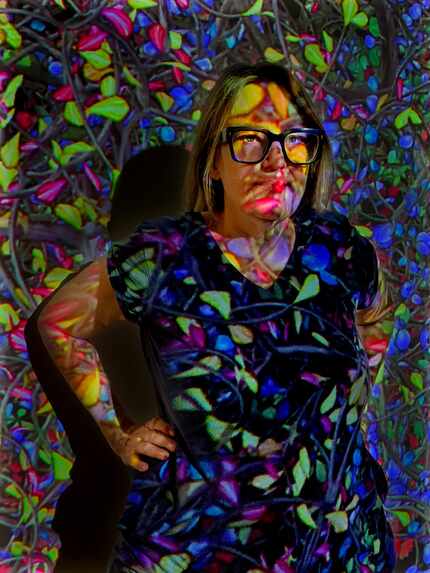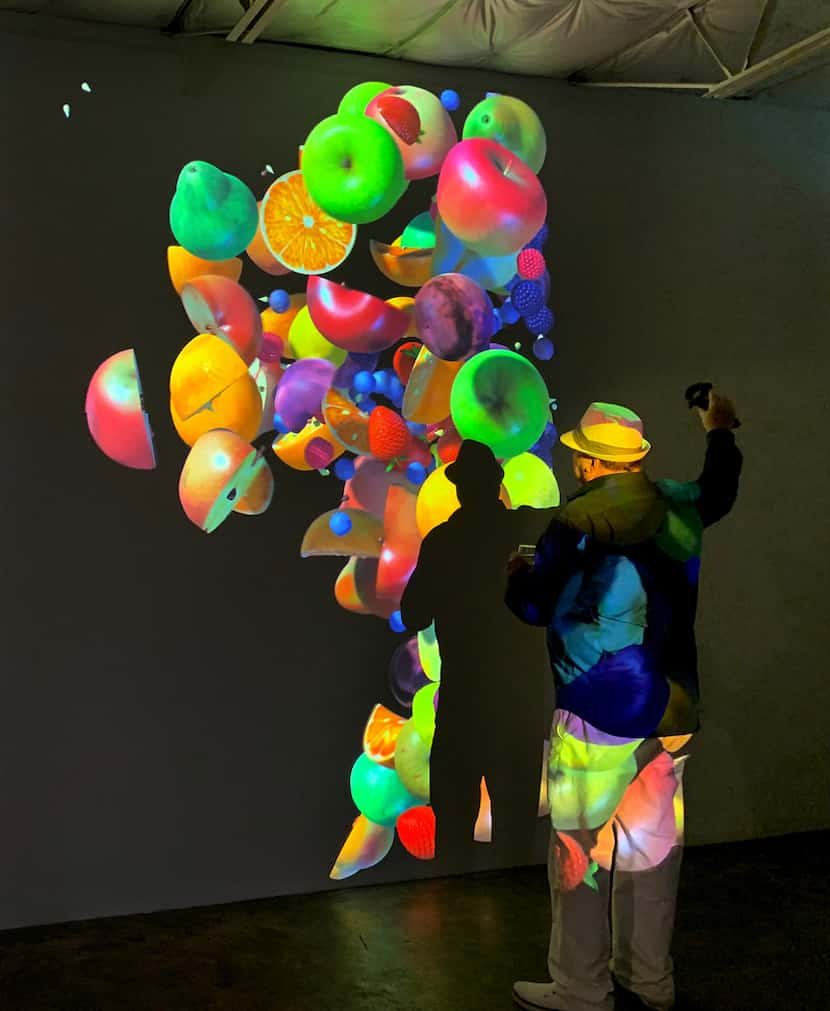With a background in both fine art and commercial animation, Jennifer Steinkamp was one of the first major artists to adopt wholly computer-generated visual forms as an artistic practice.
For 30 years, Steinkamp has created immersive, site-specific installations that use digital animation to address ideas about space, perception and motion.
Her exhibition "Womb" at Talley Dunn Gallery features three animations she reworked specifically for the gallery, as well as two brand-new pieces made for the space.

None of this is unusual for Steinkamp. She tailors each of her works for the particular site where it will be shown, often reworking existing pieces to fit new venues. In doing so, she is able to cover surfaces in their entirety, resulting in expansive installations that encompass the viewer and fully dominate their field of view.
Although her work is often described as video art, that isn't quite accurate. Steinkamp uses 3D modeling software and Photoshop to painstakingly draw, paint and animate individual elements.
How did she get started with this work so early on? Steinkamp set out to study design in Minnesota in the late 1970s but switched to fine art at the insistence of a professor and moved to California, where she studied at the Art Center of Pasadena. A class with famed media art theorist Gene Youngblood (whose book Expanded Cinema paved the way for the future of media art) exposed her to how computer animation, as well as film and video installations, could be used to create sculpture.
Realizing that computing was the key to marrying her interests — in art, design and spatial experience — Steinkamp went to work for a motion graphics company in Los Angeles in order to hone her skills. There she had access to the latest computers and graphics software, tools that art schools didn't employ at the time.
Gallery owner Talley Dunn, who first saw Steinkamp's work in the 2003 Istanbul Biennial, where Steinkamp projected a series of undulating trees within an ancient, underground cistern, has long wanted to mount a solo exhibition by the artist.
"I knew the site-specific nature of Jennifer's work in my gallery, combined with her ability to respond to varied architectural settings, would result in an important exhibition for Dallas," says Dunn, who added that she's always been committed to showcasing artwork by women.
The first gallery features Bouquet, comprised of a multitude of flowering tree branches floating in blackness, along with Judy Crook 12 and Judy Crook 13, an ongoing series of swaying individual trees. (Steinkamp named them after her former color theory professor.) In each, the movement of the branches defines the visual and physical boundaries, stretching to the edges of the projection, out toward the viewer and back into negative space. In the last gallery is Blind Eye 4, in which a forest of birch trees stares outward, their telltale black "eyes" trained on the audience.
The works harken back to those Steinkamp showed at the Istanbul Biennial, where Steinkamp first used her tree motif. The installation was inspired by the story of Medusa, the mythological snake-haired foe of Hercules whose powerful gaze could turn men to stone. Over the years, Medusa has been recast as a feminist icon, a powerful and beguiling figure that embodies the plurality of contemporary feminism. Yet, she still retains bits of her original identity as a monster. She's forever a shorthand for a "nasty woman."
Femininity, in all its various forms, has long been the backbone of Steinkamp's work ("Always has been. Always will be," she says); she doesn't shy away from using what could be called unabashedly feminine subject matter. Fruits, flowers and trees have largely dominated her work over the last two decades, so their presence in this exhibition's titular piece, Womb, is no surprise.
Featuring a cornucopia of fruit that tumbles across the middle gallery's wall, Womb is also an interactive piece, allowing two viewers to control the fruit's movements through virtual reality handsets. As viewers move, the fruit follows and swirls around with increasing intensity, the effect heightened by shrieking wind sound effects culled from the tornado scene in The Wizard of Oz. When movement ceases, the fruit goes into autopilot, bumping around in space.

Womb underscores that much of Steinkamp's work is about literally taking up space. After all, what is a womb but an empty vessel that occupies space within a body, occasionally growing and stretching outward to exercise agency in the world beyond? A womb is a place of transformation, and that, above all else, is what Steinkamp wants to impart to her audience.
"It's like when you've watched a movie for a long time and you walk out of the theater and feel different," she says. "I like the idea of transforming your emotions so you feel different after you experience my work."
Details
"Jennifer Steinkamp: Womb" at Talley Dunn Gallery until Oct. 12, 2019; 5020 Tracy St., Dallas, open Tuesday through Saturday, 10 a.m. to 5 p.m.

/cloudfront-us-east-1.images.arcpublishing.com/dmn/ZFJWX63LQRF42Q2PTATHP6RPQY.jpg)
/cloudfront-us-east-1.images.arcpublishing.com/dmn/7PJ7Y4VIDYIS32CXXLS7CT77Z4.jpg)
/cloudfront-us-east-1.images.arcpublishing.com/dmn/CFAA2WNNANBFDLACCGGYNX5ORY.jpg)
/cloudfront-us-east-1.images.arcpublishing.com/dmn/BNVJWBKVZ5GMTJ6WQRIUYBD2H4.jpg)
/cloudfront-us-east-1.images.arcpublishing.com/dmn/LAAQBB3ASBETJKMCZA4XDW3DS4.jpg)